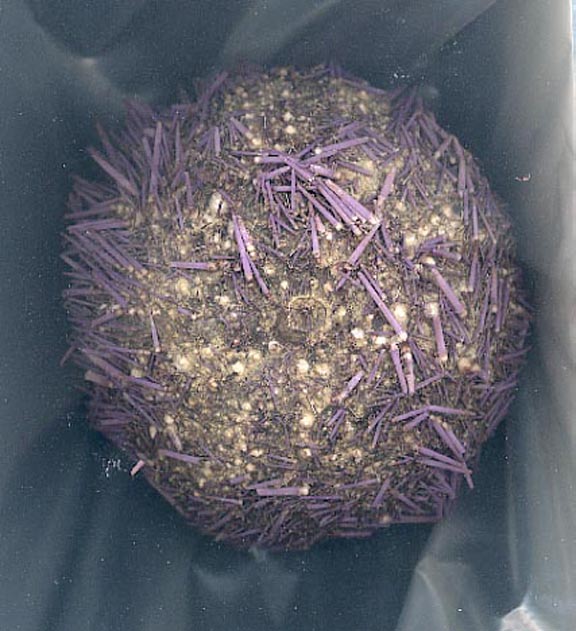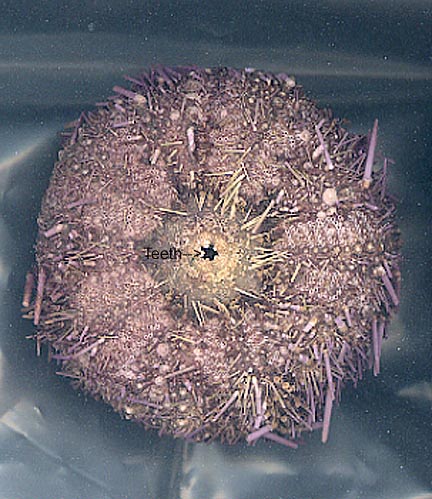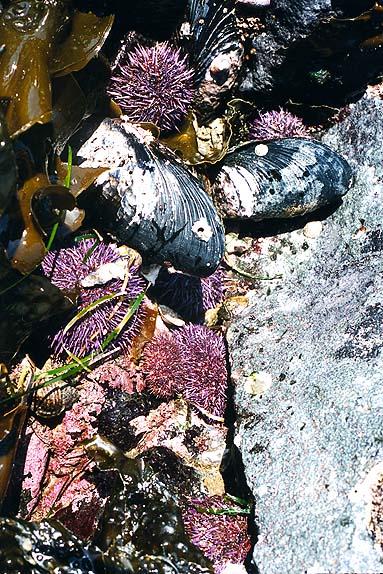Purple Urchins and Californianus sp mussels at a “zero” level tide on the west side of Great Race Rocks.
July 2000
The purple sea urchin is about 10 cm. across, spines up to 2cm. and is bright purple. Its body “skeleton”, called the test, is shell like with bumps and holes from which the moveable spines and tube feet extend .The spines are used for protection, movement and for trapping drifting algae. It has a claw like mouth with 5 teeth-like plates. It is composed of over 60 shells and is called Aristotle’s lantern and is located on the underside or oral side of its body. The anus and the genital pores are on the aboral side of the sea Urchin.
In February, 2004 we had a note from CECIERJ requesting permission to use our video of the purple sea urchin in media being prepared for their undergrad distance learning courses. By offering these courses, the consortium CEDERJ contributes to bringing high quality free education to the inner cities of the Rio de Janeiro State. As well as permitting such use of our resources, we have added for them, an introduction by one of our Brazilian students, Rita who helped us make this video in Portuguese about the Sea Urchins and Echinoderms..
Diet: The Sea Urchin feeds on algae, plankton, kelp, periwinkles, and occasional tiny barnacles or mussels.
They are eaten by crabs, sunflower stars, snails, sea otters, some birds, fish, and people.
Reproduction: Fertilization in Sea Urchin is external, the female release several million tiny, yellow jelly-coated eggs at a time. The gametes join the water column as planktonic forms .
Behaviour: Although they often live in sheltering holes that they have worn in the rocks and they have also been observed to makes holes in solid steel, this behaviour is not evident at Race Rocks. Most of them live in shallow water here, They move surprisingly fast on their tube feet and spines. Moving their feet by a hydraulic water vascular system which creates suction in the end of the foot by pulling water out of the madreporite. They can also regrow broken spines.
The following images show the structural features on the test of a dead purple sea urchin. The image was produced by scanning.


This image shows the aboral view of a purple sea urchin.The dark patch in the middle is the anus. These were dead specimens.Thus the spines are missing.
Domain Eukarya
Kingdom Animalia
Phylum Ecinodermata
Class Echinodea
Order Echinoida
Family Strongylocentrotidae
Genus Strongylocentrotus
Species purpuratus
common name Purple Sea Urchin
The lower image shows the oral view of a purple sea urchin. The hole in the middle is its mouth with the sharp edges its 5 teeth. Note the pentaradial symmetry.

